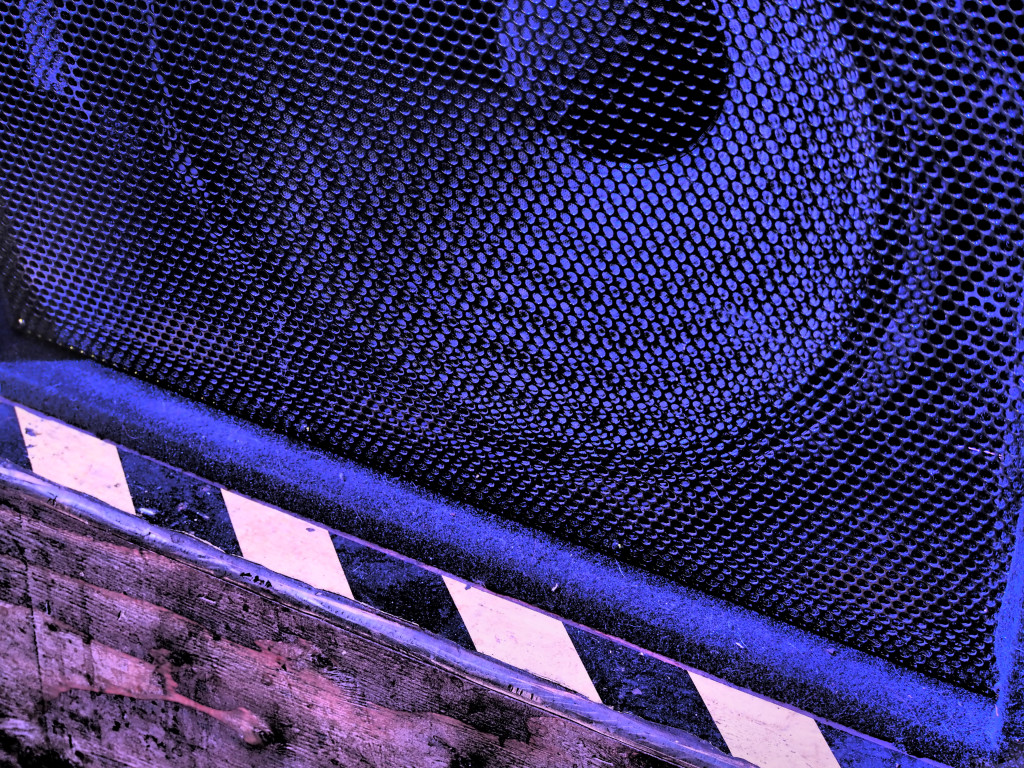Headroom is a holistic thing. If you run out of it in one place, getting more of it somewhere else isn’t enough.
Please Remember:
The opinions expressed are mine only. These opinions do not necessarily reflect anybody else’s opinions. I do not own, operate, manage, or represent any band, venue, or company that I talk about, unless explicitly noted.

 Want to use this image for something else? Great! Click it for the link to a high-res or resolution-independent version.
Want to use this image for something else? Great! Click it for the link to a high-res or resolution-independent version.The Video
The Script
Let’s say that an audio human has a mixing console that’s feeding a loudspeaker system. (That makes sense, right? Most of us do that a lot.) This loudspeaker system is nifty because it’s magic. It never clips. The only limit on output is how much voltage the console can deliver.
The weird bit is that the console can’t really swing much voltage at its outputs. It clips at a peak of 1 volt. Another weird thing is that the console doesn’t have any inboard mic pres. Those are separate. (I know this is really strange, but I’m trying to make a point.)
Our aforementioned audio human just happens to have a mic pre that also reaches its maximum output at a 1 volt peak. They connect a signal source to the preamp, crank the pre until it’s just barely under clipping, set a fader at 0 dB, and…it’s not loud enough.
So, what do they do?
If you said, “They need a console with more output capability,” you’re exactly right.
It wouldn’t make any sense to buy a mic pre with more output, right? If the console output clips at 1 volt, what good does it do to have a mic pre that will deliver 12 volts into the console? You can drive the signal to the mix outputs a lot harder, but all that gets you is more distortion.
Obtaining and connecting an upstream device with more output is kinda absurd, frankly. It’s not a solution at all. The console output is the limiting factor.
But here’s the thing.
People take this actually non-sensical approach with amps and speakers all the time. Some of the confusion is understandable. Amplifier and speaker power ratings aren’t necessarily intuitive, for one, and passive speakers don’t have level meters as a rule. There’s also all the complexity involved with trying to describe the limits of a multi-device speaker enclosure with a single number.
I get that there’s nuance involved here.
But here’s the thing. Speakers, like everything else, have a maximum undistorted output point. It’s a peak level – a point beyond which there is no more “instantaneous” sound pressure to be had. If you have, say, a loudspeaker that can handle a peak input of 1000 watts, and an amplifier that can put a 1000 watt peak input through that box…you’re there. Your system is maximized. Any more available amplifier power is wasted on both driver distortion AND the chance that you might wreck your speaker.
But people see those nasty little clip lights on their amps, and think: “Gosh, I need to buy a more powerful amplifier!” They get obsessed with headroom, but in this compartmentalized way that only involves the amp.
Actually, unless the amp’s peak (NOT CONTINUOUS – PEAK)…unless the amp’s peak output is half (or less) of the speaker’s maximum peak rating, you do NOT need a larger amp. Getting a more powerful amplifier only gets you more headroom in the amplifier, when what you actually want is more headroom throughout the entire system output section.
What you need is a speaker that gets louder for the same amount of input. Or a bigger amplifier AND a speaker that can handle the additional power. Or just “more PA” in general – although that’s a whole other can of worms in itself.